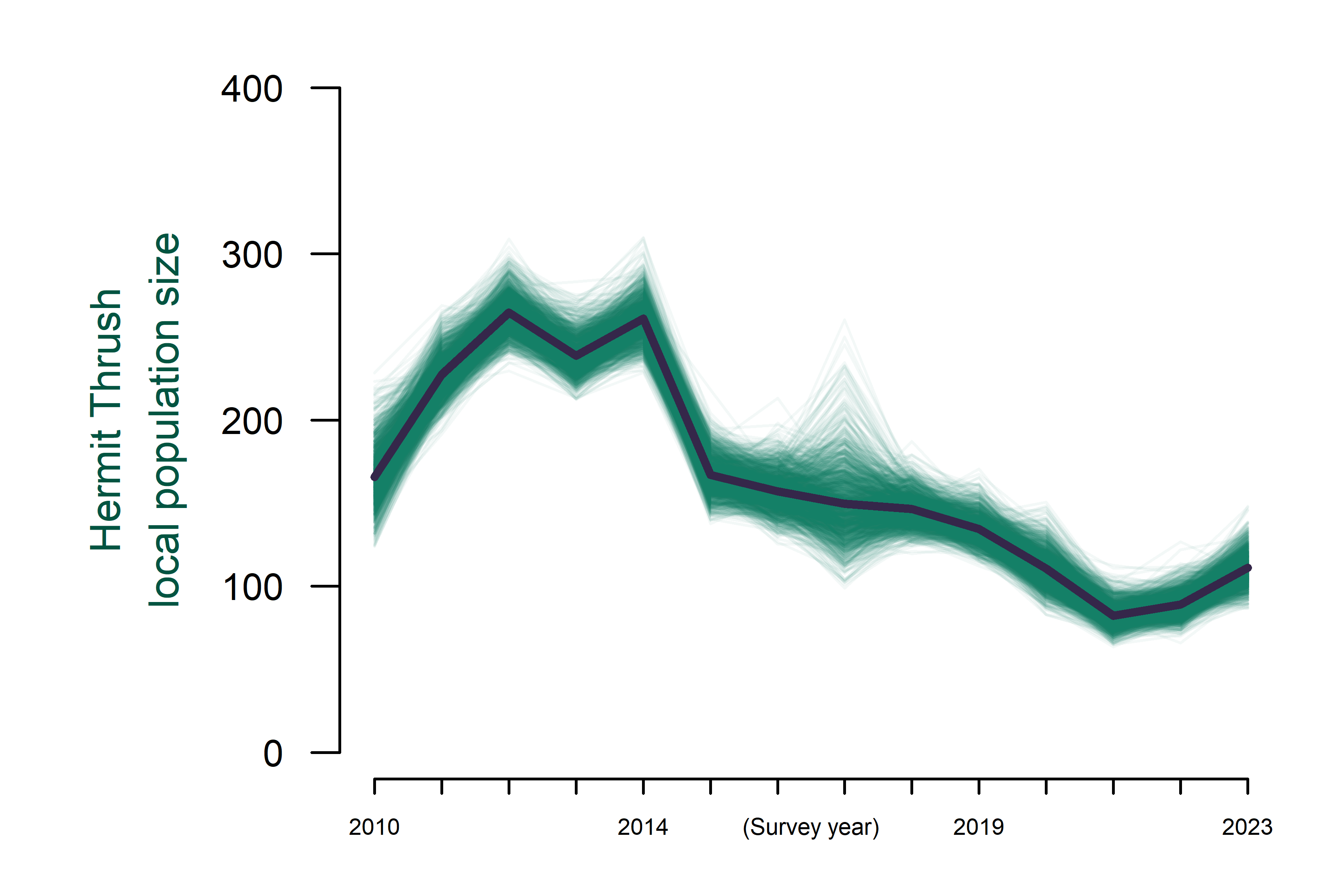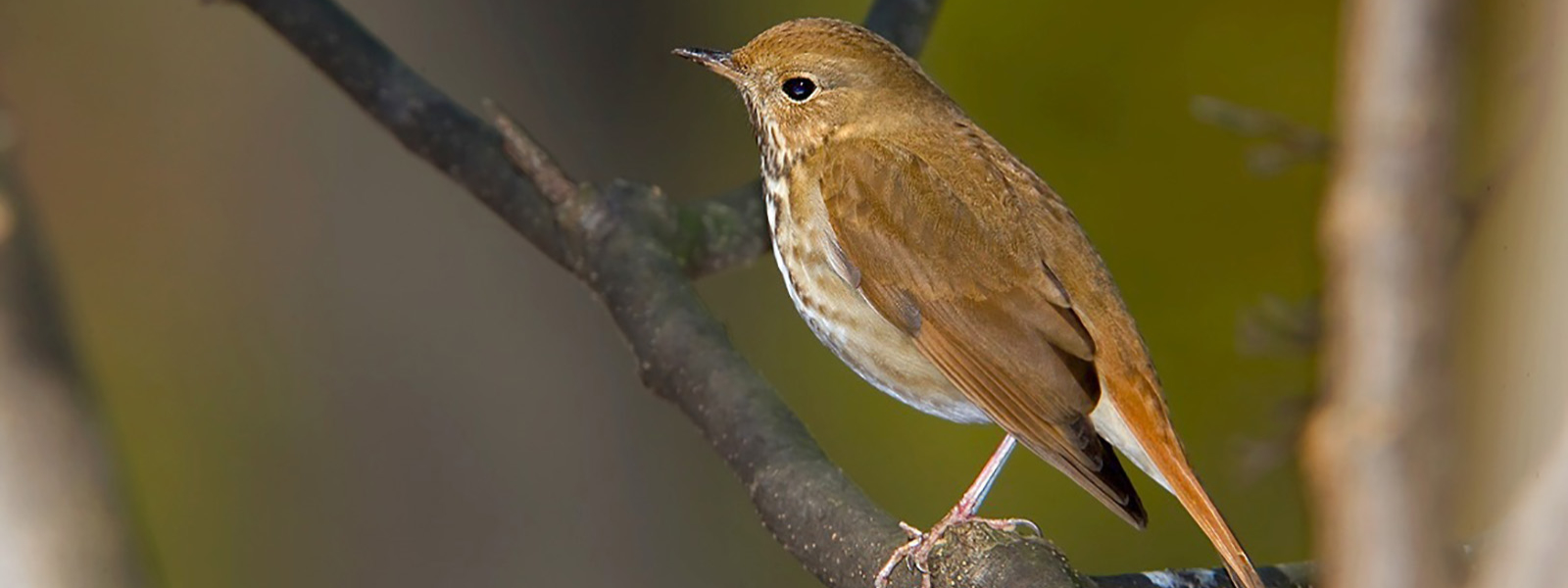The State of Hermit Thrushes
Regionally: Declining

The mean (thick, dark line) annual estimate of Hermit Thrush abundance—calculated as the annual sum of estimated Hermit Thrush within the local area (a 4-hectare circle) surrounding all 791 Mountain Birdwatch sampling stations. The thinner, lighter lines represent less probable estimates of the annual abundance.
Hermit Thrush are relatively uncommon in the montane forests surveyed as part of Mountain Birdwatch. By comparison, a visitor to the spruce-fir zone is likely to encounter approximately twice as many Bicknell’s Thrush as Hermit Thrush for the time being. The estimated local abundance of Hermit Thrush around Mountain Birdwatch sampling stations, in the figure above, paint an interesting picture. Numbers of Hermit Thrush were clearly on the rise from 2010 to 2014, but then the population suddenly and unexpectedly declined (by nearly 50%) where it has slowly declined since 2015.
Mean annual population trends and population change (with 80% Bayesian credible intervals [CRI]) for Hermit Thrush from 2010 through 2023. A red dot| Region | Mean annual trend (%) | Trend (80% CRI) | Probability of decrease | Probability of increase | Population change (%) 2010-2023 | Population change (80% CRI) |
|---|---|---|---|---|---|---|
| All regions | (-9.36, -4.54) | >0.99 | <0.01 | -60.83 | (-72.12, -45.35) | |
| New York (Catskills) | (-9.35, -2.88) | 0.99 | 0.01 | -56.21 | (-72.10, -31.62) | |
| New York (Adirondacks) | (-7.42, -0.95) | 0.95 | 0.05 | -42.80 | (-63.29, -11.69) | |
| Vermont | (-15.08, -9.29) | >0.99 | <0.01 | -81.61 | (-88.05, -71.85) | |
| New Hampshire | (-8.11, -2.57) | 0.99 | 0.01 | -50.73 | (-66.69, -28.74) | |
| Maine | (-12.05, -5.76) | >0.99 | <0.01 | -70.15 | (-81.15, -53.73) |
Globally: Declining
Mountain Birdwatch data suggest that Hermit Thrush populations have undergone tremendous declines over the past 14 year, with Vermont’s population of Hermit Thrush (within the spruce-fir zone) having declined by >60%. At the same time, it’s important to keep in mind that the majority of Hermit Thrush breed at lower elevations, in the hardwood forest. The range of the Hermit Thrush has only recently expanded to include the northeastern U.S. They first expanded into southern New England in the early 1990s (possibly associated with farm abandonment and reforestation), and quickly expanded northward. So while these steep declines for much of the spruce-fir zone are alarming, and parallel state-specific trends from the North American Breeding Bird survey (BBS), they may not tell the full story. eBird trends, however, suggest that Hermit Thrush populations have declined over the last decade from across their entire breeding range, with the exception of Nova Scotia. The driving force behind these continental downward trends for Hermit Thrush is unknown at the moment. Hermit Thrush reach the upper limits of their elevational distribution in the lower zone of montane spruce-fir forests. Recent climate modeling suggests that Hermit Thrush will disappear from New England over the next 100 years.
Data collected by the Breeding Bird Survey indicate that the size of the breeding population of Hermit Thrushes has remained stable. Population gains appear concentrated in eastern North America, exemplified by the ongoing colonization of the southern Appalachians. However, populations in western North America, the Mid-Atlantic and New England states, are likely declining.


